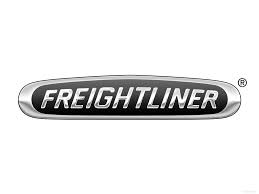Sprinter 2500 V6-3.0L DSL Turbo (2008)

Because engine load will vary extensively based on vehicle applications, driving conditions and driver requirements, the ECM constantly adapts
electronic throttle position, exhaust gas recirculation valve position, fuel injection timing, and injection quantity to deliver the best engine performance,
emissions control, fuel economy and torque. For any given operating condition when the engine coolant temperature is above 80° C (176° F), the ECM is
programmed to operate in the most effective fuel delivery and injection mode based on input signals from the following sensors and modules:
-
Mass Airflow (MAF) Sensor
-
Fuel Rail Pressure Sensor
-
Boost Pressure Sensor
-
Coolant Temperature Sensor
-
Intake Manifold Pressure (MAP) Sensor
-
Electronic Stability Control Module
-
Steering Control Module
-
Transmission Control Module
Limp-In Mode
If there is a fault detected with the accelerator pedal position sensor, the ECM will set the engine speed at 1100 RPM.
Overspeed Detection Mode
If the ECM detects engine RPM that exceeds 4500 RPM, the ECM will set a DTC in memory and illuminate the MIL until the DTC is cleared.
After-Run Mode
The ECM transfers RAM information to ROM and performs an Input/Output state check.
MONITORED CIRCUITS
The ECM is able to monitor and identify most driveability related trouble conditions. Some circuits are directly monitored through ECM feedback
circuitry. In addition, the ECM monitors the voltage state of some circuits and compares those states with expected values. Other systems are monitored
indirectly when the ECM conducts a rationality test to identify problems. Although most subsytems of the engine control module are either directly or
indirectly monitored, there may be occasions when diagnostic trouble codes are not immediately identified. For a trouble code to set, a specific set of
conditions must occur and unless these conditions occur, a DTC will not set.
DIAGNOSTIC TROUBLE CODES
Each diagnostic trouble code (DTC) is diagnosed by following a specific procedure. The diagnostic test procedure contains step-by-step instruction for
determining the cause of the DTC as well as no trouble code problems.
HARD CODE
A DTC that comes back within one cycle of the ignition key is a hard code. This means that the problem is current every time the ECM/SKIM checks
that circuit or function. Procedures in this manual verify if the DTC is a hard code at the beginning of each test. When the fault is not a hard code, an
intermittent test must be performed. NOTE: If the scan tool displays faults for multiple components (i.e. ECT, VSS, IAT sensors) identify and check the
shared circuits for possible problems before continuing (i.e. sensor grounds or 5-volt supply circuits). Refer to the appropriate schematic to identify
shared circuits. Refer to the appropriate diagnostic information.
INTERMITTENT CODE
A DTC that is not current every time the ECM checks the circuit or function is an intermittent code. Most intermittent DTCs are caused by wiring or
connector problems. Problems that come and go like this are the most difficult to diagnose; they must be looked for under specific conditions that cause
them. NOTE: Electromagnetic (radio) interference can cause an intermittent system malfunction. This interference can interrupt communication
between the ignition key transponder and the SKIM.
The following checks may assist you in identifying a possible intermittent problem:
-
Visually inspect the related wire harness connectors. Look for broken, bent, pushed out or corroded terminals.
-
Visually inspect the related wire harness. Look for chafed, pierced or partially broken wire.
-
Refer to hotlines or technical service bulletins that may apply.
ECM DIAGNOSTIC TROUBLE CODES
IMPORTANT NOTE: Before replacing the ECM for a failed driver, control circuit or ground circuit, be sure to check the related component/circuit
integrity for failures not detected due to a double fault in the circuit. Most ECM driver/control circuit failures are caused by internal failures to
components (i.e. relays and solenoids) and shorted circuits (i.e. sensor pull-ups, drivers and ground circuits). These faults are difficult to detect when a
double fault has occurred and only one DTC has set. If the scan tool displays faults for multiple components (i.e.VSS, ECT, Batt Temp, etc.) identify and
check the shared circuits for possible problems before continuing (i.e. sensor grounds or 5-volt supply circuits). Refer to the appropriate wiring diagrams
